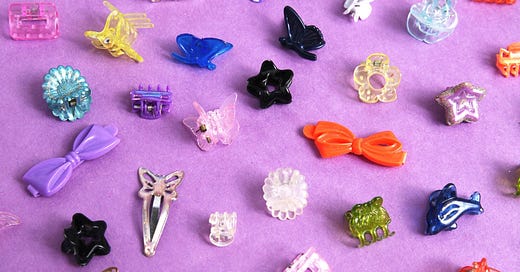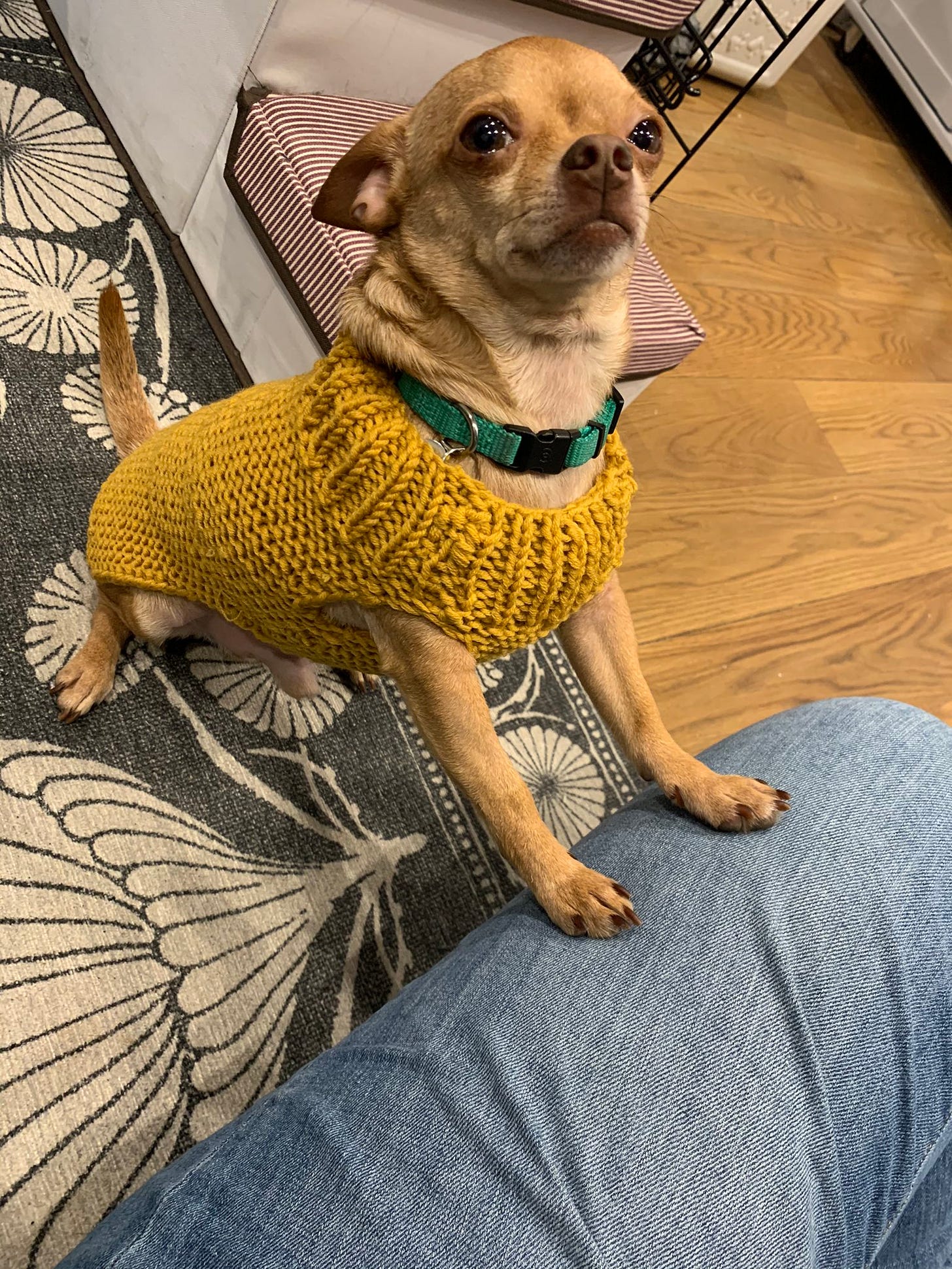Lately I have been thinking a lot about sidewalks. This is partially weather-related: since Brooklyn’s started warming up the past few weeks every single bar and restaurant with outdoor seating has been overflowing with people: laughing, happy, awkwardly fiddling with a napkin on a first date. I get to walk through them with my dog Rip, who commands their attention (in a good way):“Look at him! So small!”
I’ve also been thinking about sidewalks because I have finally been made eligible for the long-coveted vaccine. And I’ve been daydreaming about joining those folks I’ve seen comfortably sitting at sidewalk tables, drinking a Tecate and eating nachos while watching cars whiz by. My friend Lindsay says we’re about to have “a hot vax summer” à la Megan Thee Stallion, and I for one am here for that.
Insert your own metaphor here about us all being little butterflies emerging from our little COVID cocoons, etc. etc.
But thinking about being out and about in public these days is not as simple as just getting a vaccine appointment. It’s deeply fraught for most, if not all, of us.
The mass shooting of spa workers, mostly Asian women, in Atlanta has further shaken Asian-American and Pacific Islander (AAPI) communities, most of which were already seeing increases in hate crimes and harassment due to Trump’s disgusting coinage of the term “Wuhan Flu.” What happened in Atlanta was the culmination of a documented rise in hate crimes as well as racial and gendered violence towards AAPI women.
In Boulder, a gun man killed people in a grocery store, an essential retail space that’s already felt so scary and unsafe during this pandemic. The world may be starting to wake up again, but issues surrounding mental health and gun control are still unaddressed.
I had an entire separate newsletter I planned on sending about the story of 33-year-old Sarah Everard, who went missing in south London earlier this month (Women’s History Month, no less). Her remains were found several days later, miles away in Kent. A police officer is suspected of kidnapping and murdering her while she walked home from a friend’s house. Sarah’s name trended on Twitter as other women, outraged by the news, began to post the many precautions they take when walking home alone, things men often take for granted.
The list of tweets about her murder took on a life of their own, as they tend to do. It should be noted that Sarah’s case is, while certainly horrific, one that is particularly salient for news media coverage. She was young, white, blonde, beautiful. The current suspect is a police officer who may or may not have lured her into his cop car. It reinforces our tendency towards moral panic: save the white woman, our damsel in distress.
I say this not to diminish the tragedy and seriousness of Sarah Everard’s kidnapping and murder—her story is the stuff of my nightmares. But it’s worth remembering that for women of color, the danger and the difficulty to get the press and police to take their disappearances seriously adds even more stress and pressure when walking home alone. Not to mention they aren’t likely to trust the police to help them (and rightfully so). Murder rates for trans women of color are astonishing high, particularly if they rely upon sex work to survive. And Indigenous women in the United States and Canada are murdered and/or vanish at alarming rates as well, and they have been for years. The vast majority of their cases are unsolved, making it one of the largest human-rights crises on our continent. (Here too, police officers are especially suspect: particularly when we revisit the brutal history of Canadian police’s “starlight tours”).
I realize listing all of these ongoing dangers can be a real downer when we’re all finally starting to feel some hope. And I don’t want it to be a downer. But according to the New York Times and Buzzfeed 50% of adults feel the same way I do: anxious about a return to a “normal” social life, what it could mean, and what we can even consider “safe” any more. I don’t think that considering the particular vulnerabilities marginalized groups will face as vaccinations grow is totally out of the realm of our re-opening discussions.
I’d be lying if I told you that I have not missed the anxiety of walking home from a subway late at night, or feeling spooked by a shadow on the sidewalk this past year in quarantine. For all the frustrations and grief, I had the privilege of a reprieve from this kind of stress while I worked from home (plenty of essential workers did not have that privilege). But still, I feel as though I have to psych myself up to re-enter the world again rather than merely pass through it. And these tragedies in the headlines certainly don’t make me feel better.
Anxiety is rooted in the fight-or-flight evolutionary instinct to avoid dangerous situations leading to an untimely demise. Evolutionarily speaking, it helped us to escape from deadly predators and survive another day. So I guess what I’m asking is, will there be any better accountability for violence, hate crimes, harassment, and murder in public when our Hot Vax Summer begins, so that all of these groups could perhaps walk down the sidewalk with peace of mind? Probably not. But I want us to still ask the question, and keep asking for accountability moving forward.
Suggesting that things will look different this summer in regards to public safety is Pollyanna-ish at best, but also completely naive. Rape culture is still a thing, as is systemic racism and colonialism. We can keep advocating for change, but with re-opening comes different and new vulnerabilities too. They shouldn’t be a surprise, and yet, they still are.
At some point I won’t merely be walking Rip past a table: I’ll be sitting at a table myself. To re-enter life is to re-enter the public sphere: with all the wonder and ugliness it has to offer. And I want to hold out hope that it could still be a better public than what I left behind a year ago. When I order my first drink outside on a sidewalk, I want everyone to feel as safe as I (hopefully) will.






